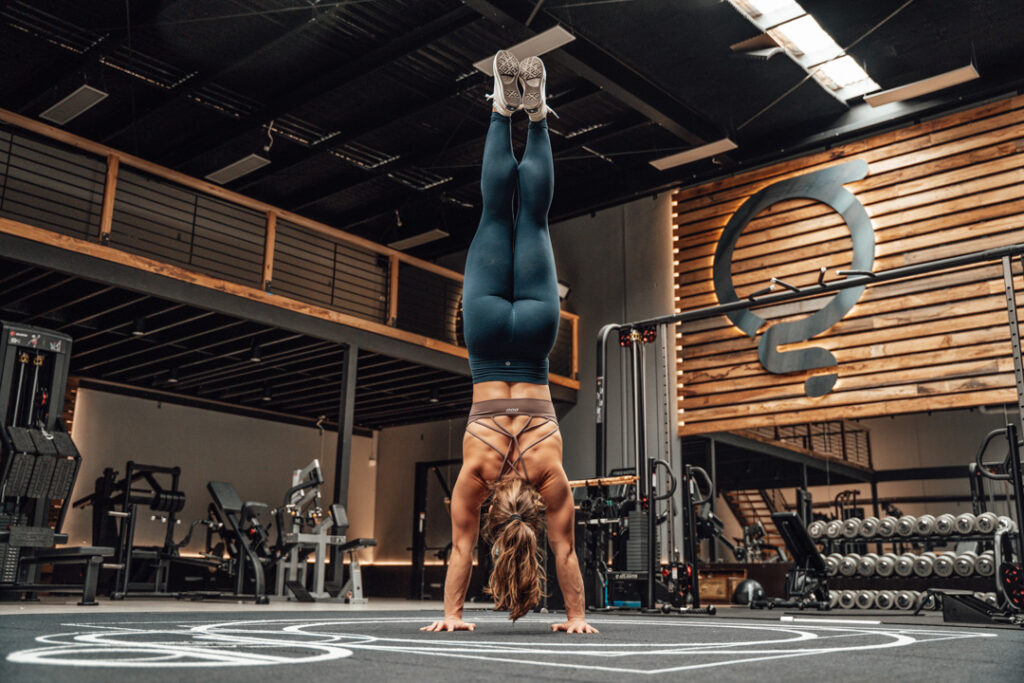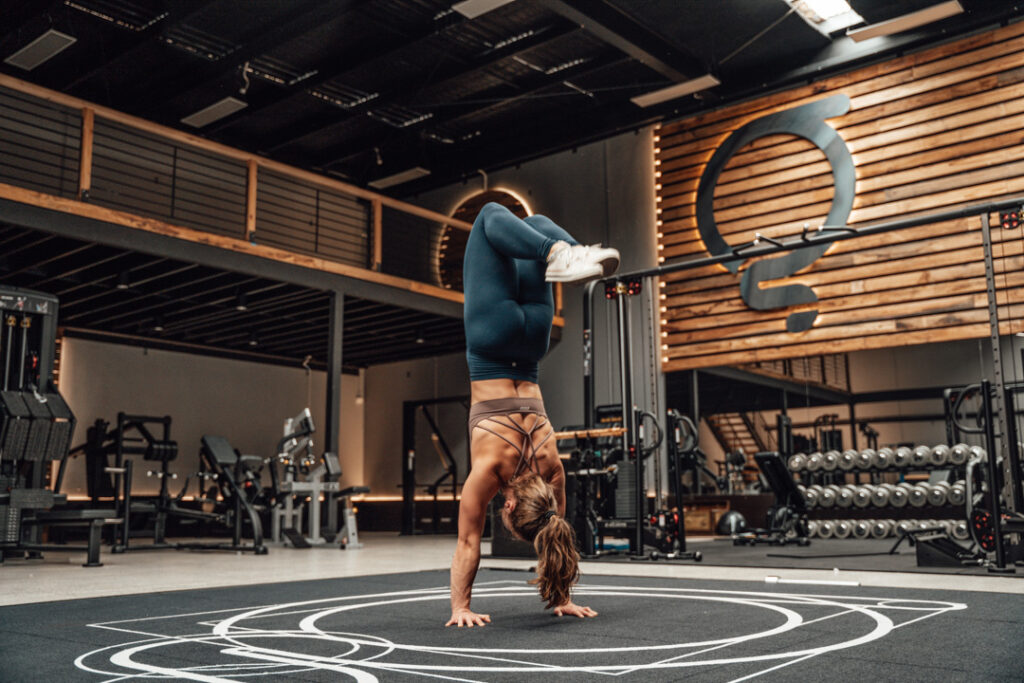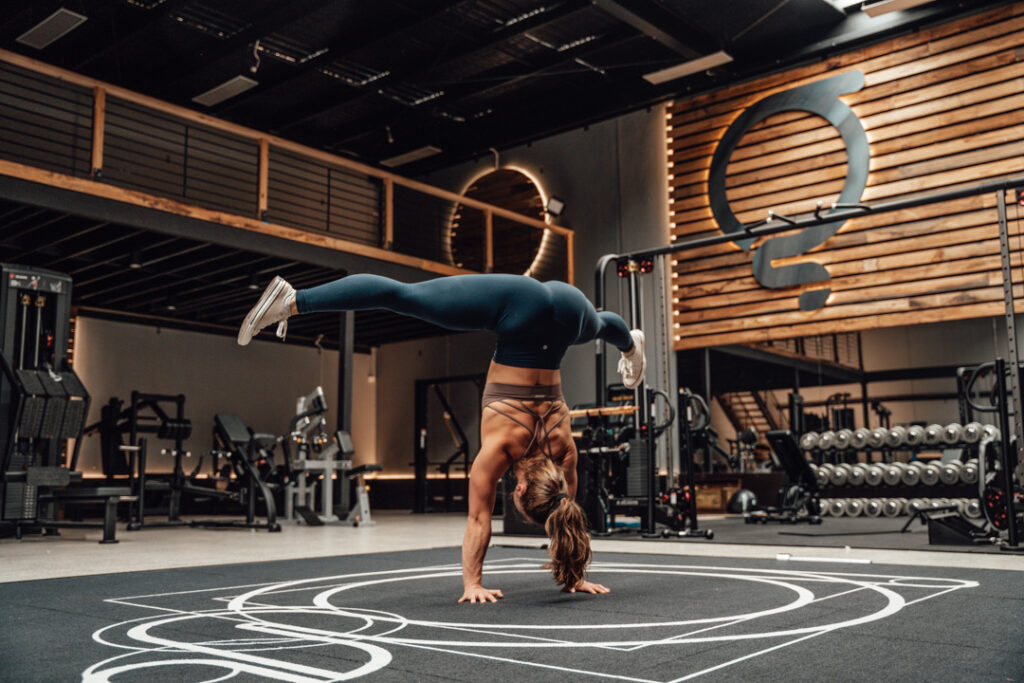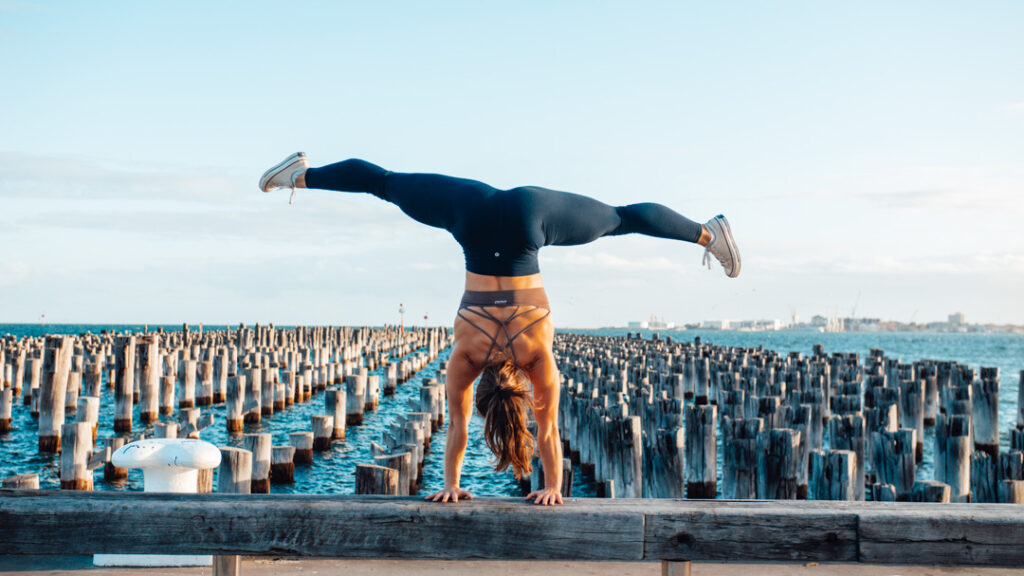
I find it so weird that often when we learn to handstand, no one spends significant time talking about what to do with and feel in your hands. It leads most beginners to focus their efforts and intentions elsewhere, when the biggest cues are coming from the hands since they’re the base of support when you’re upside down.
Here’s what you need to know:
- The pressure in your hands needs to shift forward from the heel and outside of the hand to the middle of the hand. That means there will be weight in your fingertips and possibly the base of your knuckles as well. It’s further forward than most people think when they start handstanding.
- The muscles of the forearm should be working hard. You know how when you stand on one foot, the foot wobbles around and the muscles around your shin and calf have to adjust to create that balance? The hands have to do the same when you’re upside down
This article covers what you need to know about your hands in various handstand movements.
Handstand holds and walks
What should you feel?
- A shift in pressure from the heel of the hand into the knuckles and fingertips as you kick up into the handstand
- A maintenance of pressure in the middle of the hand as you hold
- The fingertips digging into the floor whenever your body threatens to tip over the top and overbalance
- The distal knuckles popping up off the floor if you are gripping the floor hard enough
- The shoulders shifting forward whenever your body threatens to fall back down and underbalance
Common Mistakes
- Leaving the weight too far back in the heels of the hands
- Flat, lifeless hands with no intention of the fingertips into the floor
- No action when encountered with a slight over or underbalance
Handstand Wall Pull Aways – Plate to Wrist
How to do this drill
Place 2x 20kg bumper plates right up against a wall.
Cartwheel or walk into a wall-facing handstand such that the base of your wrist is almost touching, and your wrist is touching, the plates.
Shift your body weight slowly off the wall, forward into the hands. At some stage, your wrists will gently peel off the bumper plates. At pretty much exactly this moment if you’ve set it up correctly, your feet will also leave the wall.
Grip the ground like your life depends on it to prevent an overbalance.
Enjoy the handstand you are now in.
Kick up to overbalance
What is it?
A bailing drill that can also double as a drill to teach you to really dig your hands into the floor when your weight shifts over the top.
Technique
Deliberately kick up with more force than is required for a handstand so that you start to overbalance. Delay the fall for as long as you can by digging your hands into the ground. When it can’t be rescued, twist to bail safely and catch yourself.
Play around with the intensity of the kick up and see if you can actually find the right amount of force to stop a kick up in its tracks.
Wrist Push Up
Why?
To build strength in your fingers and forearms to be better at handstands.
Technique
Kneeling on all fours, shift your body weight forward so that your shoulders are over your knuckles. Keeping the shoulders there, lift the thumb off the floor, then lift the heel of the hand off the ground by pressing the knuckles down into the floor. Don’t let yourself shift back while you do this – you should feel the undersides of your forearms contracting as you do so.
General Wrist Warm Up
What is it?
A wrist warm up to help get your wrists used to the amount of pressure that’s going to go through them once you start pressurising your hands correctly in a handstand.
What to do with it
Follow along with the video, and do this warmup or the pieces of it you think are relevant to you before you handstand.
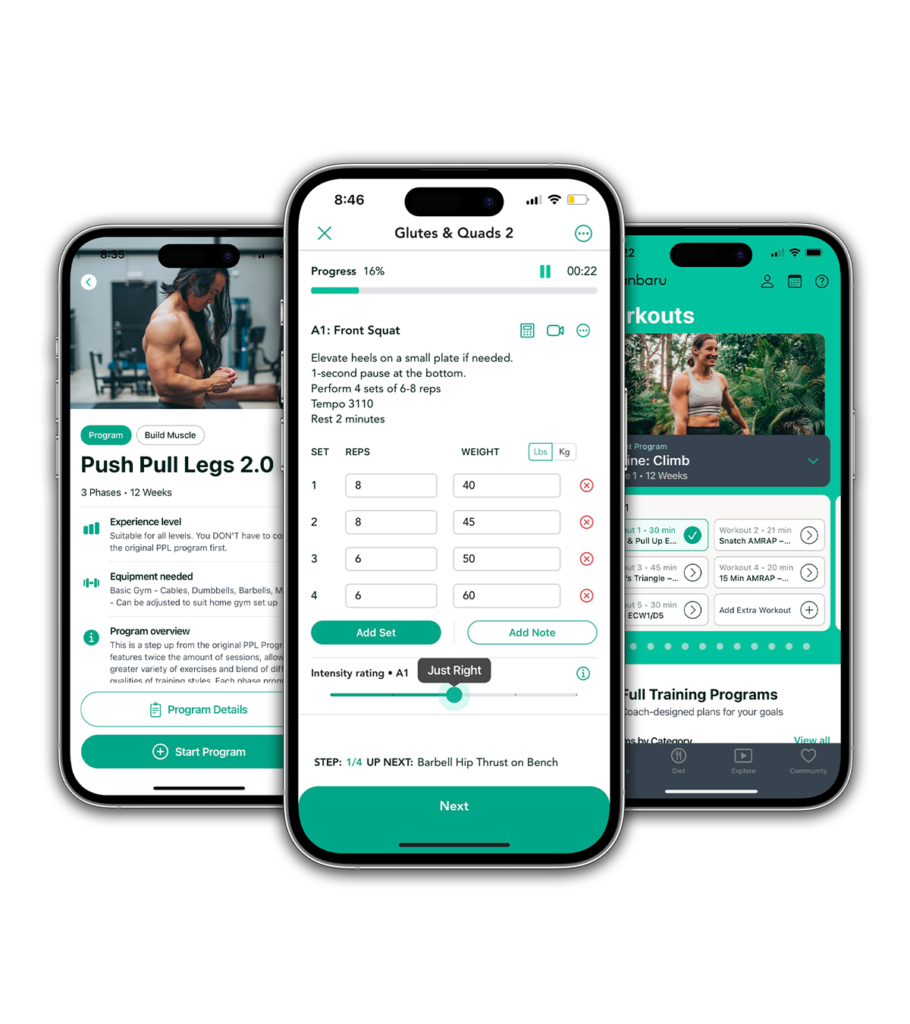
Ready to workout?
Follow proven programs written by expert coaches, delivered in an easy-to-use app built by lifters, for lifters.
Related Posts
How Ganbaru Method helped Anna transform her body & life
Anna, 30, is a tech sales professional who changed her physique by gaining muscle and losing fat with Ganbaru Method.
View more How Ganbaru Method helped Anna transform her body & life
This Ganbaru CrossFit program got a new dad back in the best shape of his life
Petr, 34, is an executive chef, husband, and father of a toddler. This is how he got his fitness back on track.
View more This Ganbaru CrossFit program got a new dad back in the best shape of his life
How Ganbaru Method helped Corey with successful bodybuilding results
Corey, 33, used Ganbaru Method to place in bodybuilding shows, achieve the splits, and transform his confidence with his health.
View more How Ganbaru Method helped Corey with successful bodybuilding results



